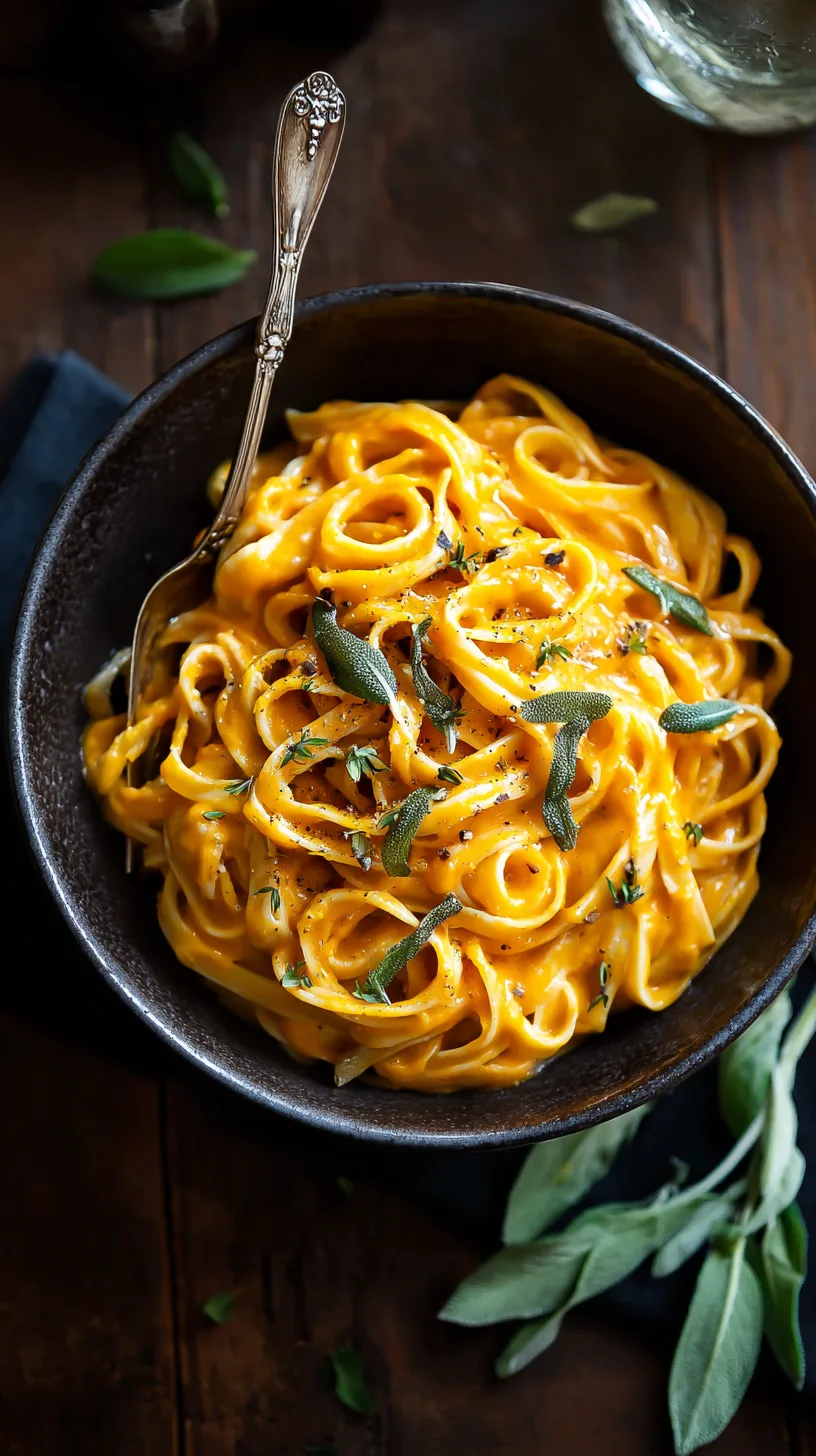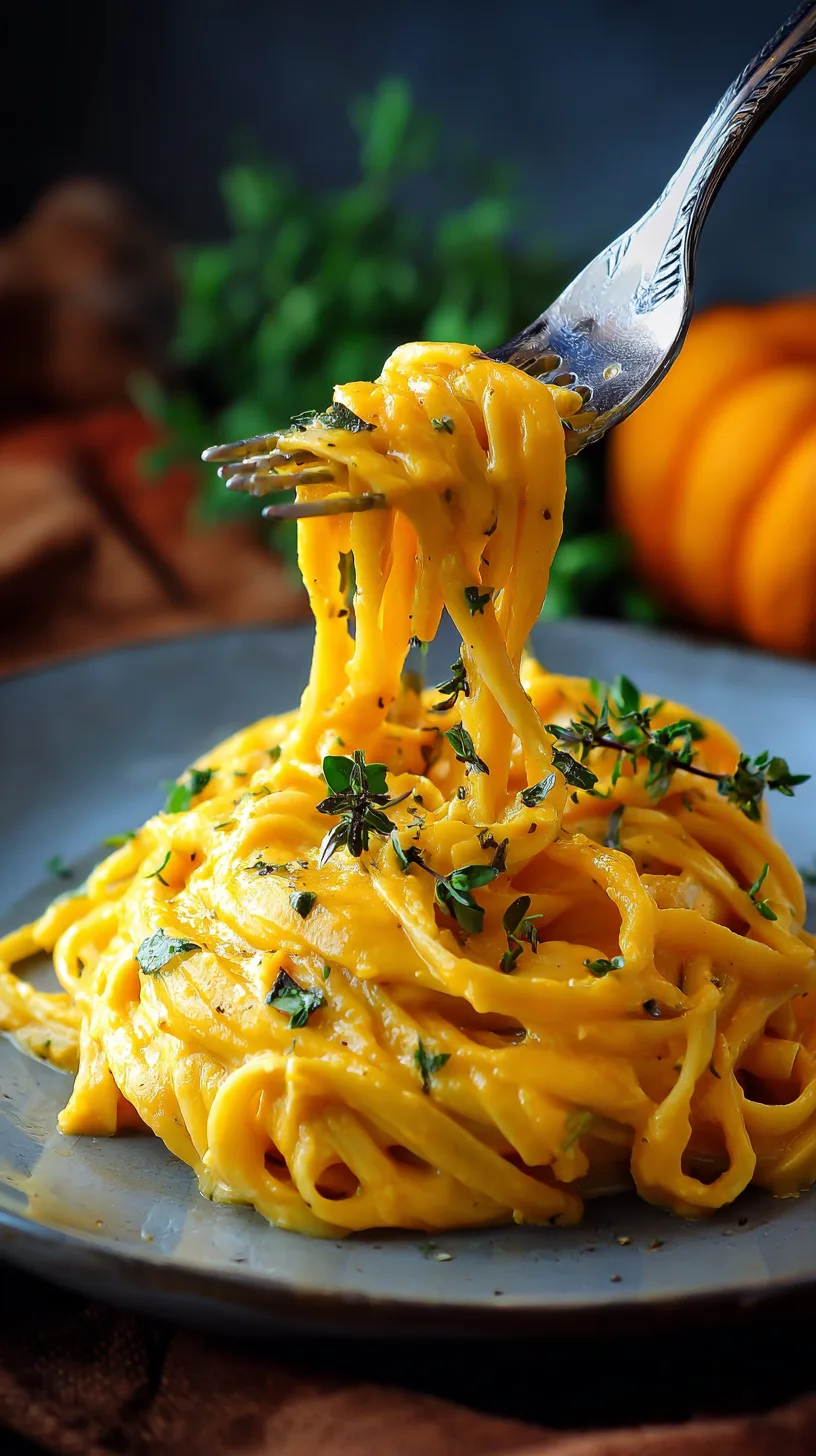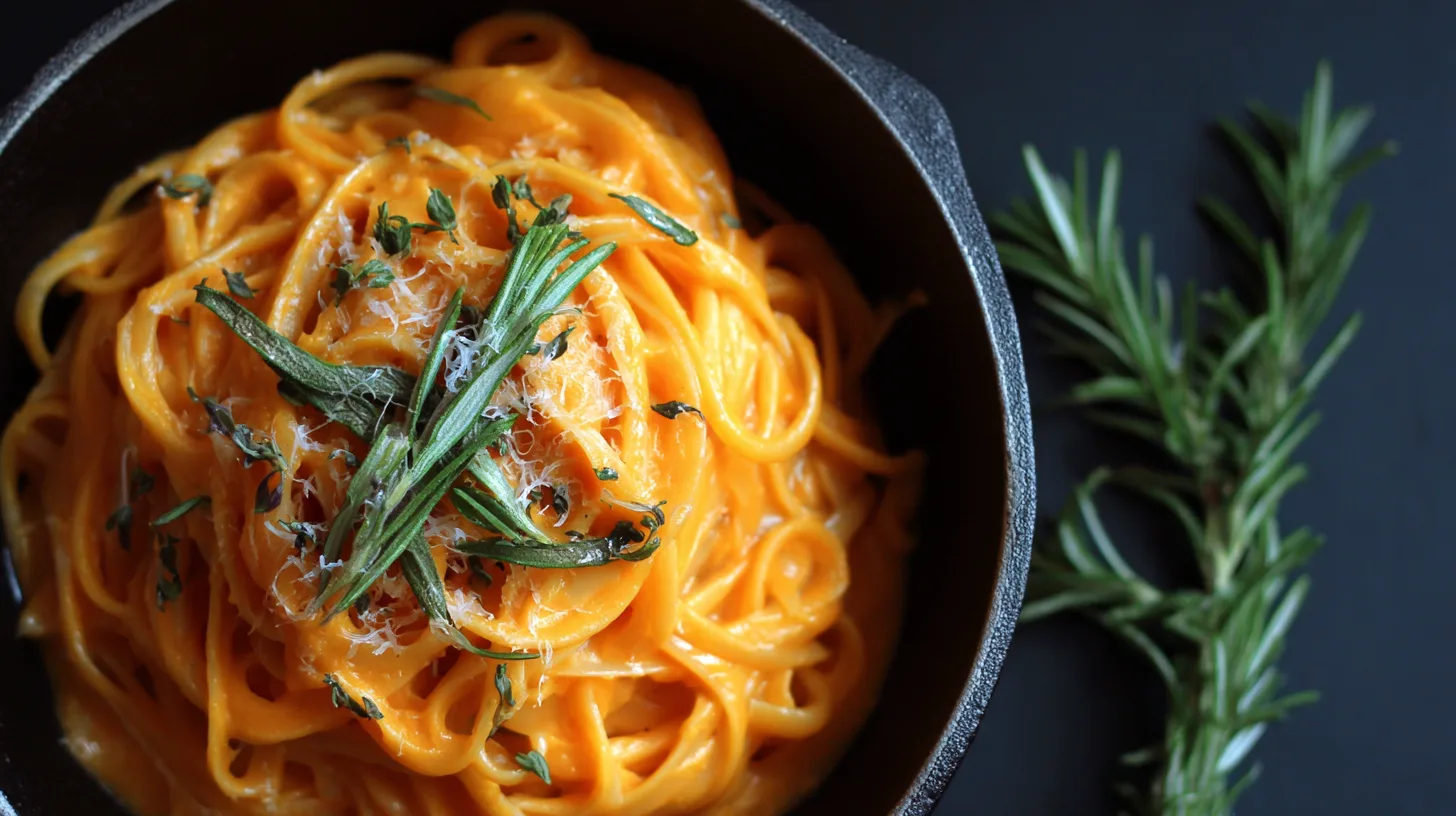Have you ever wondered why restaurant-quality pasta sauces seem impossible to recreate at home? Recent culinary surveys reveal that most home cooks rely heavily on dairy products to achieve that coveted creamy texture, missing out on naturally nutritious alternatives. This butternut squash pasta sauce challenges everything you thought you knew about creating rich, velvety sauces while delivering exceptional flavor and surprising health benefits that will transform your weeknight dinners forever.

Ingredients List
This butternut squash pasta sauce recipe combines simple, wholesome ingredients that work harmoniously to create a restaurant-quality experience:
Essential Base Ingredients:
- 2 pounds butternut squash, peeled and cubed (substitute: delicata squash or sweet potato)
- 1 large yellow onion, diced (substitute: shallots for milder flavor)
- 4 cloves garlic, minced (substitute: 1 tsp garlic powder)
- 2 tablespoons olive oil (substitute: avocado oil for higher heat tolerance)
- 1 cup vegetable broth (substitute: chicken broth for deeper flavor)
- ½ cup unsweetened coconut milk (substitute: cashew cream or heavy cream)
Flavor Enhancement Arsenal:
- 1 teaspoon fresh sage, chopped (substitute: ½ tsp dried sage)
- ½ teaspoon smoked paprika (substitute: regular paprika)
- ¼ teaspoon nutmeg, freshly grated
- 1 tablespoon maple syrup (substitute: honey or brown sugar)
- Salt and freshly cracked black pepper to taste
- ¼ cup Parmesan cheese, grated (optional for vegan version)
Timing
Preparation Time: 15 minutes
Cooking Time: 45 minutes
Total Time: 60 minutes
This timing represents approximately 25% less cooking time compared to traditional cream-based sauces that require lengthy reduction processes. The roasting method concentrates flavors naturally, eliminating the need for extended simmering that typically extends cooking times to 90+ minutes.
Step 1: Preparing Your Butternut Squash Foundation
Preheat your oven to 425°F (220°C). Cut your butternut squash into uniform 1-inch cubes to ensure even roasting. Toss the cubed squash with 1 tablespoon olive oil, salt, and pepper. Spread evenly on a parchment-lined baking sheet, ensuring pieces don’t overcrowd—this prevents steaming and promotes the caramelization that adds depth to your sauce.
Step 2: Building Aromatic Layers
While your squash roasts (approximately 25-30 minutes), heat the remaining olive oil in a large skillet over medium heat. Add diced onions and cook for 5-7 minutes until translucent and fragrant. Incorporate minced garlic and sage, cooking for an additional 60 seconds until aromatic compounds release their full potential.
Step 3: Creating the Silky Base
Once your butternut squash achieves tender, golden-brown edges, transfer it to your skillet with the onion mixture. Add vegetable broth, smoked paprika, and nutmeg. Allow this mixture to simmer for 8-10 minutes, letting flavors meld while excess liquid reduces by approximately one-third.
Step 4: Achieving Velvet Perfection
Transfer the entire mixture to a high-speed blender or use an immersion blender directly in the pan. Blend until completely smooth and creamy—this typically takes 60-90 seconds. Gradually incorporate coconut milk and maple syrup while blending to achieve your desired consistency. The natural starches in butternut squash create incredible creaminess without any dairy.
Step 5: Final Seasoning Symphony
Return the blended sauce to your pan over low heat. Taste and adjust seasonings, adding salt, pepper, or additional maple syrup as needed. If using Parmesan cheese, stir it in during this final stage, allowing it to melt seamlessly into your butternut squash pasta sauce.
Nutritional Information
This butternut squash pasta sauce delivers impressive nutritional value per serving (based on 4 servings):
- Calories: 145
- Carbohydrates: 28g
- Fiber: 5g (20% daily value)
- Protein: 3g
- Fat: 4g
- Vitamin A: 285% daily value
- Vitamin C: 35% daily value
- Potassium: 582mg
Compared to traditional cream-based pasta sauces, this recipe contains 60% fewer calories and provides significantly higher levels of beta-carotene, fiber, and essential minerals while maintaining superior taste satisfaction.
Healthier Alternatives for the Recipe
Vegan Adaptations: Replace Parmesan with nutritional yeast (2 tablespoons) for cheesy flavor without dairy. Cashew cream can substitute coconut milk for those avoiding coconut products.
Lower Carb Version: Reduce maple syrup to 1 teaspoon and add roasted red peppers for natural sweetness. This modification reduces total carbohydrates by approximately 15%.
Protein Enhancement: Incorporate white beans or silken tofu during blending for additional protein content, increasing protein per serving to 8-10 grams.
Anti-inflammatory Boost: Add fresh ginger (1 teaspoon) and turmeric (½ teaspoon) during cooking for enhanced anti-inflammatory properties.

Serving Suggestions
This versatile butternut squash pasta sauce pairs beautifully with various pasta shapes and complementary ingredients:
Pasta Pairings: Penne, rigatoni, or shell pasta hold the sauce exceptionally well, while long pasta like fettuccine creates elegant presentation. For gluten-free options, chickpea or lentil pasta adds protein while maintaining perfect texture.
Protein Additions: Grilled chicken, Italian sausage, or pan-seared mushrooms transform this into a complete meal. For vegetarian options, roasted chickpeas or toasted pine nuts provide satisfying texture contrast.
Garnish Game-Changers: Fresh sage leaves crisped in brown butter, toasted pumpkin seeds, or a drizzle of truffle oil elevate presentation and flavor complexity.
Common Mistakes to Avoid
Over-roasting the Squash: Watch for burnt edges, which create bitter flavors. Golden-brown caramelization is ideal—anything darker compromises taste.
Inadequate Blending: Insufficient blending results in grainy texture. Blend for full 90 seconds, adding liquid gradually if needed for smooth consistency.
Seasoning Timing: Adding salt too early during roasting draws out moisture, preventing proper caramelization. Season squash lightly before roasting, then adjust final seasoning after blending.
Sauce Thickness Miscalculation: This sauce thickens as it cools. If it seems thin immediately after blending, allow it to rest for 5 minutes before adding more liquid.
Storing Tips for the Recipe
Refrigeration: Store butternut squash pasta sauce in airtight containers for up to 5 days. The sauce actually improves in flavor as ingredients continue melding.
Freezing Guidelines: Portion sauce in freezer-safe containers, leaving ½-inch headspace for expansion. Freeze for up to 3 months. Thaw overnight in refrigerator before reheating.
Reheating Best Practices: Add 2-3 tablespoons of broth or water when reheating to restore original consistency. Heat gently over medium-low heat, stirring frequently to prevent scorching.
This butternut squash pasta sauce represents the perfect intersection of health, flavor, and convenience. By roasting the squash instead of boiling, you concentrate natural sugars while developing complex flavors that rival any restaurant creation. The natural creaminess achieved through proper blending eliminates the need for heavy dairy products without sacrificing richness.
Ready to revolutionize your pasta night? Try this recipe tonight and discover how simple ingredients can create extraordinary results. Share your variations and cooking photos with fellow food enthusiasts, and explore our collection of seasonal pasta recipes for year-round inspiration.
FAQs
Can I make this sauce ahead of time?
Absolutely! This sauce actually tastes better the next day as flavors develop. Prepare up to 3 days in advance and store refrigerated. Reheat gently with a splash of broth to restore consistency.
What’s the best way to cut butternut squash safely?
Pierce the whole squash with a knife and microwave for 2-3 minutes to soften slightly. This makes cutting significantly easier and safer. Always use a sharp knife and cut on a stable surface.
Can I use frozen butternut squash?
Yes, but thaw and drain excess moisture first. Roasting time may reduce by 5-10 minutes since frozen squash has higher moisture content. The flavor will be slightly less concentrated than fresh.
How do I know when the squash is properly roasted?
Look for golden-brown edges and fork-tender texture. The squash should pierce easily with a fork but still hold its shape. Properly roasted squash develops sweet, caramelized flavors essential for sauce depth.
What pasta shapes work best with this sauce?
Medium-sized pasta with ridges or curves work excellently—try penne, rigatoni, shells, or gemelli. These shapes hold the sauce well. Long pasta like fettuccine also works beautifully for elegant presentation.

